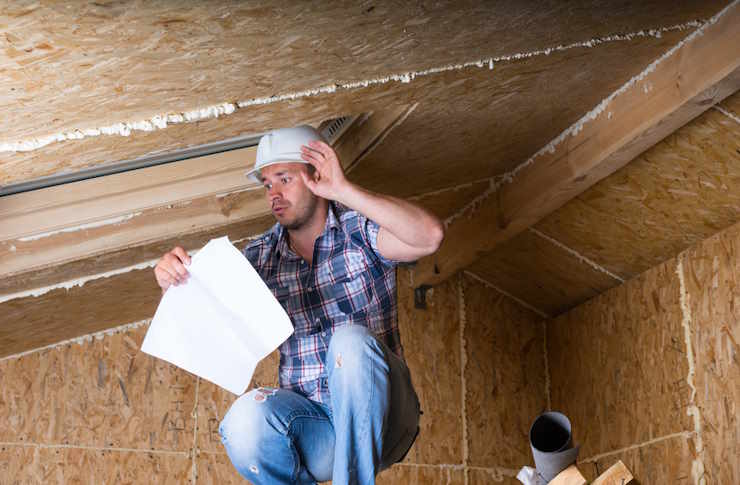Moisture Management Strategies for Roof Voids
Effective moisture control in roof voids improves indoor comfort and preserves building fabric. This overview highlights practical strategies—from targeted ventilation and sealing to material selection and routine maintenance—to manage humidity, reduce drafts, and support thermal performance.

Roof voids, the spaces between the ceiling and the roof deck, are vulnerable to moisture accumulation that can undermine insulation, reduce rvalue, and create conditions for rot or mold. Addressing moisture in these roofspaces requires a mix of airflow management, careful sealing, appropriate materials, and sensible retrofit choices. The following sections explain actionable strategies to balance ventilation and sealing, protect thermal performance, and support energy efficiency while preserving occupant comfort.
How does ventilation affect airflow and moisture?
Proper ventilation is central to moisture control in roof voids. Continuous airflow helps remove humid air that can condense on cold surfaces; balanced intake and exhaust vents prevent stagnant pockets where moisture accumulates. Ridge vents, soffit vents, and properly spaced baffles allow airflow along the roofspace without compromising insulation placement. When designing ventilation, consider local climate patterns: cooler climates may need less continuous ventilation but still require airflow to prevent condensation, while humid regions benefit from ventilation combined with other moisture mitigation measures.
Can sealing and retrofit reduce drafts and thermal loss?
Sealing air leaks between conditioned spaces and the roofspace is a key retrofit task to reduce drafts and protect thermal performance. Gaps around chimneys, plumbing stacks, recessed lights, and attic hatches are common sources of warm, moist air entering the roofspace. Use appropriate sealants, gaskets, and insulated covers to close these penetrations. During retrofit projects, maintain a clear distinction between conditioned and unconditioned zones: sealing and insulating the ceiling plane reduces thermal bridging and keeps the roofspace dryer by limiting the volume of warm air that could carry moisture upward.
What materials improve rvalue and thermal performance?
Selecting insulation and building materials that maintain rvalue under moist conditions improves long-term efficiency. Closed-cell spray foam resists moisture migration and can add structural air sealing, while fiberglass and cellulose must be kept dry to retain thermal performance. Vapor-permeable underlayments and breathable membranes help manage moisture diffusion without trapping humidity. Consider material compatibility with existing roof assemblies and prioritize products with documented performance in the expected climate. Proper installation practices are as important as the material choice to avoid compressing insulation or leaving gaps that undermine rvalue.
How can roofspace maintenance support efficiency and comfort?
Routine maintenance reduces the risk of moisture problems and supports comfort and energy savings. Inspect roofspaces seasonally for signs of leaks, damp insulation, staining, or mold. Ensure vents remain unblocked by debris, insulation, or bird nests, and verify that attic hatches and access doors are weatherstripped and insulated. Addressing small issues early—such as replacing worn flashing or tightening loose fasteners—prevents water intrusion that could compromise thermal performance and indoor comfort. Maintenance also includes checking that mechanical ventilation from bathrooms and kitchens is properly routed to the exterior and not dumping moisture into the roofspace.
What role do energy and savings play in design choices?
Energy implications guide moisture management decisions: preventing moisture-related degradation of insulation preserves thermal efficiency and reduces heating and cooling loads, which translates into long-term savings. Balancing sealing with controlled ventilation ensures that efficiency gains from higher rvalue are not negated by indoor moisture entering the roofspace. When planning a retrofit, evaluate trade-offs between upfront costs of higher-performance materials and anticipated energy savings over time. Prioritize interventions that both reduce moisture risks and improve thermal continuity for the best combined effect on comfort and operating costs.
How to monitor moisture and plan ongoing upkeep?
Monitoring helps verify that strategies are working and informs maintenance intervals. Use simple indicators such as visual inspections, humidity sensors placed in roofspaces, and infrared imaging during cooler months to detect cold spots where condensation may occur. Track indoor humidity trends and investigate spikes that could strain ventilation and sealing measures. Create a maintenance schedule that includes vent clearances, insulation condition checks, and verification of seal integrity around penetrations. These steps help sustain airflow balance, minimize drafts, and extend the lifespan of materials and insulation.
Moisture management in roof voids is a systems task: ventilation, sealing, material choice, and maintenance interact to influence thermal performance, rvalue retention, and occupant comfort. Thoughtful retrofit and routine care protect insulation from moisture-related loss of efficiency and reduce the likelihood of structural or indoor-air-quality problems. Implementing balanced airflow, targeted sealing, and sensible material selections will help preserve roofspace integrity while supporting energy and comfort goals.





